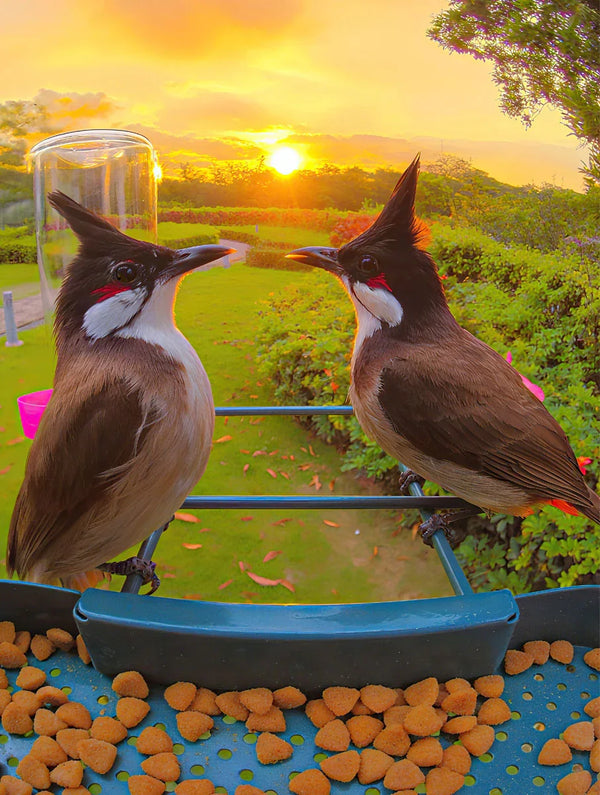Unlocking the Secrets of the Enigmatic Yellow Bird: Discover Its Hidden Traits!
Yellow birds captivate the imagination with their vibrant plumage and cheerful songs. These creatures symbolize joy and optimism in nature, often associated with sunny days and blooming flowers. With over a hundred species of yellow birds scattered across various habitats worldwide, their diversity is both intriguing and bewildering. Each species boasts unique characteristics that contribute to the rich tapestry of avian life. This article aims to explore the fascinating traits and behaviors of several yellow birds, shedding light on their ecological roles and the beauty they bring to our world.

Understanding Yellow Birds: An Overview
Yellow birds are defined by their predominantly yellow plumage, which can range from bright canary yellow to softer, more muted shades. Common features among these species include small to medium size, a slender body, and a lively demeanor. Many yellow birds thrive in open fields, wetlands, and forests, showcasing adaptability in various environments. Geographically, they can be found on every continent except Antarctica, with some species, like the American Goldfinch, being prevalent in North America. Each species has evolved traits that allow it to thrive in its specific habitat, making yellow birds a fascinating subject of study for ornithologists and bird lovers alike.
Common Species of Yellow Birds
Among the myriad of yellow birds, several species stand out due to their distinct characteristics and behaviors. The American Goldfinch is a beloved backyard bird known for its striking yellow feathers and sweet, melodic song. The Yellow Warbler, with its energetic presence, is often found in wetlands and is recognized for its unique mating rituals. Lastly, the Common Yellowthroat, identifiable by its black mask and vibrant yellow underparts, is a secretive bird that prefers dense vegetation. Each of these species plays a crucial role in their ecosystems, contributing to seed dispersal and insect control, showcasing the importance of yellow birds in maintaining ecological balance.
The American Goldfinch
The American Goldfinch, or Spinus tristis, is a small bird that dazzles with its bright yellow plumage, especially in males during the breeding season. Their diet consists primarily of seeds, with a particular fondness for dandelions and sunflowers. Goldfinches are unique among North American songbirds for their late nesting habits, typically around July, and they build their nests in shrubs or trees. They are strong fliers, known for their fluttery flight patterns, and their cheerful songs create a lively ambiance in gardens and parks.
The Yellow Warbler
The Yellow Warbler, a charming little bird, sports bright yellow feathers with subtle streaking on its chest. During mating season, males perform elaborate courtship displays, singing a sweet, warbling song that resonates through riparian areas. Their breeding grounds are often found near water bodies, where they construct cup-shaped nests in shrubs. This species plays a vital role in controlling insect populations, particularly caterpillars, enhancing the health of their ecosystem.
The Common Yellowthroat
The Common Yellowthroat is easily recognized by its distinctive black mask and bright yellow underparts. Preferring dense thickets and wetlands, this small warbler is often heard before being seen, as it tends to stay hidden among the foliage. The Common Yellowthroat is a valuable insectivore, helping to manage pest populations. Despite its stable population, habitat loss poses a threat to its survival, making conservation efforts essential for preserving this species and its habitat.
Unique Traits and Adaptations of Yellow Birds
Yellow birds exhibit a range of unique adaptations that help them thrive in their environments. Their bright coloration serves multiple purposes; it can attract mates, signal health and vitality, and even provide camouflage among flowers and foliage. Many yellow birds have developed specialized feeding habits, such as the American Goldfinch's ability to consume seeds from thistles, which are rich in nutrients. Social behaviors also play a crucial role in their survival; for instance, flocks of goldfinches often forage together, enhancing their foraging efficiency and providing safety in numbers. Understanding these adaptations highlights the evolutionary strategies that have shaped the lives of yellow birds, ensuring their success in diverse ecosystems.
Significance of Yellow Birds in Our Ecosystem
In summary, yellow birds are not just visually striking but also play significant roles in their ecosystems. From the melodious songs of the American Goldfinch to the industrious nesting behaviors of the Yellow Warbler, each species contributes uniquely to biodiversity. By appreciating these vibrant creatures and understanding their characteristics, we can foster a greater respect for nature and its intricate web of life. As we observe yellow birds in their habitats, let’s remember the importance of conservation and the need to protect the environments that support these fascinating avian species.






Comments